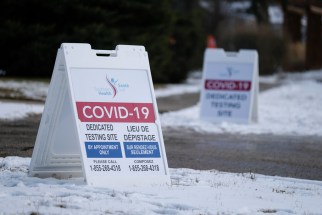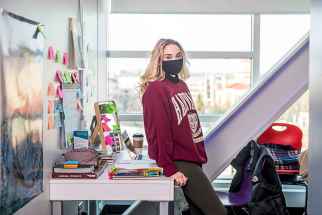Code red campus Pandemic shrinks campus experience down to the confines of a dorm room
Read this article for free:
or
Already have an account? Log in here »
To continue reading, please subscribe:
Monthly Digital Subscription
$0 for the first 4 weeks*
- Enjoy unlimited reading on winnipegfreepress.com
- Read the E-Edition, our digital replica newspaper
- Access News Break, our award-winning app
- Play interactive puzzles
*No charge for 4 weeks then price increases to the regular rate of $19.00 plus GST every four weeks. Offer available to new and qualified returning subscribers only. Cancel any time.
Monthly Digital Subscription
$4.75/week*
- Enjoy unlimited reading on winnipegfreepress.com
- Read the E-Edition, our digital replica newspaper
- Access News Break, our award-winning app
- Play interactive puzzles
*Billed as $19 plus GST every four weeks. Cancel any time.
To continue reading, please subscribe:
Add Free Press access to your Brandon Sun subscription for only an additional
$1 for the first 4 weeks*
*Your next subscription payment will increase by $1.00 and you will be charged $16.99 plus GST for four weeks. After four weeks, your payment will increase to $23.99 plus GST every four weeks.
Read unlimited articles for free today:
or
Already have an account? Log in here »
Hey there, time traveller!
This article was published 04/12/2020 (1836 days ago), so information in it may no longer be current.
Danielle Maillet-Goodfellow’s dorm room is also her library. It’s also her classroom, and her dining hall, and her gym, and her cinema, and her night club.
On the 676-acre University of Manitoba campus, her residence life is being lived out in just a few hundred square feet: she hasn’t walked to class in the fabled underground tunnels, hasn’t experienced a “Hub Night” at the campus pub, and she hasn’t actually set foot in a real-live lecture hall.
Maillet-Goodfellow has yet to experience a lot of the benchmarks of a standard year in residence, and a standard life on a university campus. For her and other dorm residents, staying at home during the pandemic means staying at school, and staying at school means staying on a campus, which isn’t really full of anything right now except for empty space.
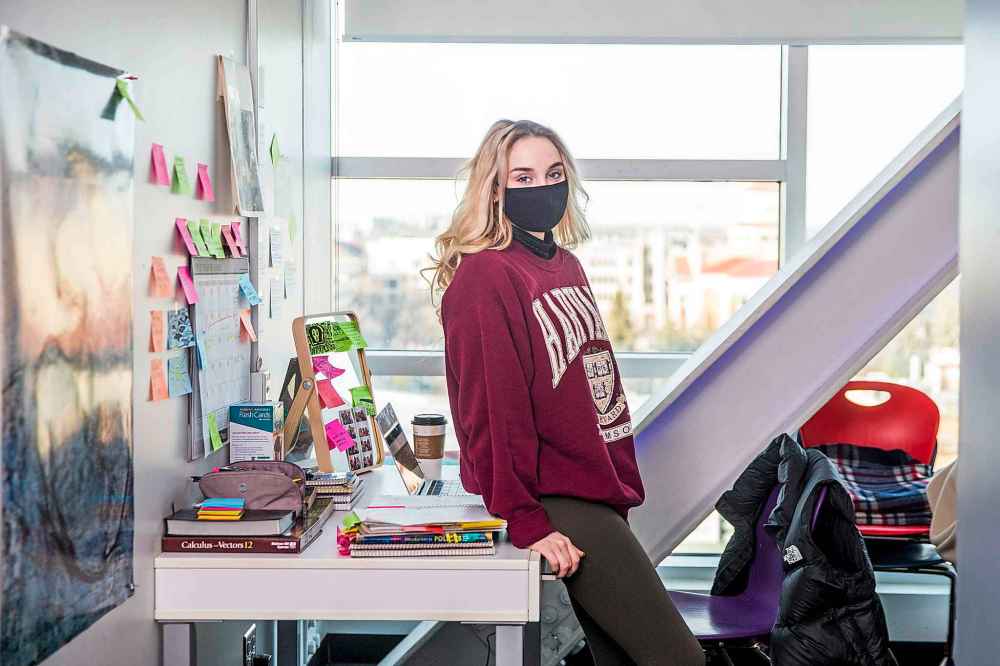
“My town (of Sioux Lookout, Ont.) is about 5,500 people, and I know everybody,” she says. She dreamed of moving away for school, to meet hundreds of new people and have something resembling the stereotypical college experience.
“I’m obviously here for educational purposes, but I came to meet people who’d help me grow, to challenge me,” she says. “I had this dream I was going to come to university, and people were going to be practically jumping to talk and interact. But when I got here, it was really dead.”
She made some friends, and in September hung out with them frequently, as the restrictions in place due to the COVID-19 pandemic were far less stringent than they are now.
At lunch in the cafeteria, even with limits on the amount of people sitting per table, connections were still being made. She went to the bar for her 18th birthday before bars closed. Part of why she came to U of M was to be a part of the synchronized skating team, and to take advantage of the on-campus arena, so she was excited for winter to come.
She skated twice before the season was cancelled. Soon, codes orange and red came, and sitting in the cafeteria wasn’t allowed. Student lounges were closed up. Some friends, including a girl from Toronto and a few from Carberry, went home to do their online courses there instead of staying in residence.
“I had this dream I was going to come to university, and people were going to be practically jumping to talk and interact. But when I got here, it was really dead.” – U of M student Danielle Maillet-Goodfellow
In a normal year, the U of M campus has about 1,200 students living in residence. This semester, it was closer to 300, and with people staying in their own rooms — everyone has their own unit, no roommates — campus felt even emptier.
Danielle Gillam, a 26-year-old athletic therapy student, doesn’t mind the solitude too much.“Being by myself isn’t too bad,” she says. But she’s already had university experience, and is engaged to boot, so her expectations for residence weren’t so sky-high as a fresh high-school graduate like Maillet-Goodfellow.
When she applied to the university last winter, Maillet-Goodfellow printed out the floor plan for her room, plotting out where she’d string her lights and hang her Van Gogh and Klimt prints.
She had no idea then that her Pembina Hall dorm room would be just about the only place she’d go this past semester.
● ● ●
When Ally Klassen moved into residence five years ago at the University of Winnipeg, coming to the city from Steinbach, there was much ado: families were arriving, carrying bins and duffel bags up the stairs and into the elevators of McFeetors Hall. In the lobby, heartfelt goodbyes and tears were flowing.
“It was a whole whirlwind,” recalls Klassen, now a residence adviser (RA) on the building’s third floor, in her fifth and hopefully final year of her honours chemistry degree.
Klassen lived in a double dorm room with her sister, but other than that, didn’t know too many people in the city. But she went to first-year orientation, and the Klassens met a girl right away and clicked as friends: they still FaceTime weekly.
“Those first few weeks, you get to know a lot of people right away,” she says.
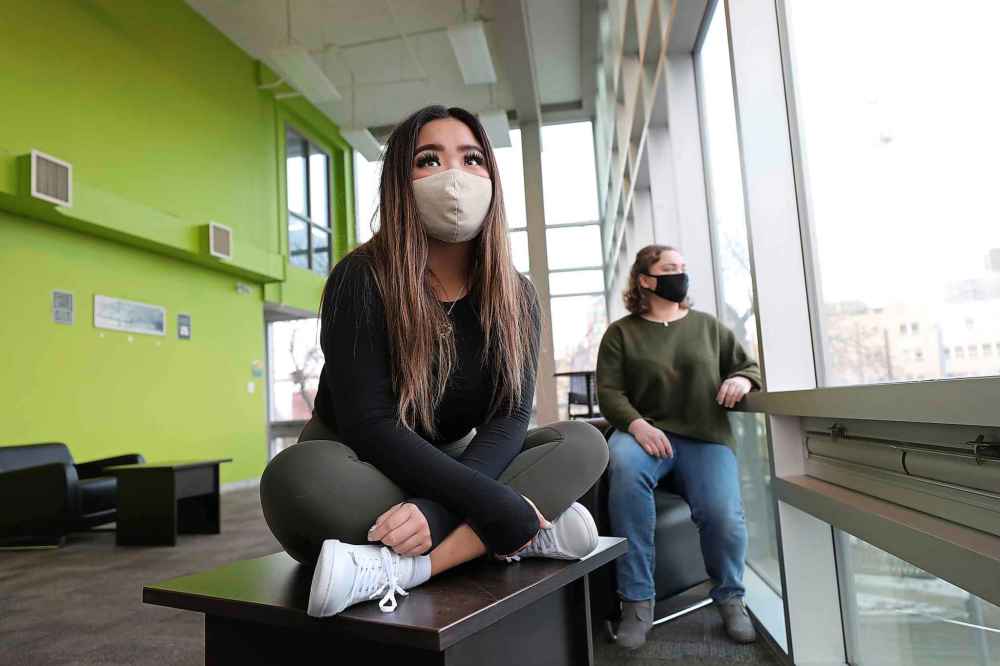
This year, things were obviously different from the get-go, says Jennifer Trotman, the University of Winnipeg’s director of campus living: one resident at a time was allowed in on move-in day, accompanied by no more than two people to bring their possessions in during a 45-minute window. Previous years, running to and from the car all day was the norm. Screens and barriers were set up to separate the students from the desk staff. Masks were mandatory in the residence’s public areas, long before the province made them an official mandate.
“I have lived in residence for eight years in my life,” says Trotman. “There’s never been a move-in like this.”
Klassen agrees. It’s her second year as an RA, and it’s much more challenging than the 2019-20 school year. Her job is basically to assist and support students, build connections and community on her floor, and make sure everything is going by the book. The pandemic makes all of those aspects markedly more complicated.
“I have lived in residence for eight years in my life. There’s never been a move-in like this.” – University of Winnipeg’s director of campus living Jennifer Trotman
She knocks on students’ doors to do one-on-one check-ins from the hallway. Her programs for floor residents — dance parties, movie nights, thanksgiving dinner — were all done over Zoom. In all, there are 67 students living on campus, from Nigeria, Hong Kong, India, China, Brazil, the Bahamas, Bangladesh, Vietnam, Sri Lanka and Canada.
Klassen is directly responsible for 26 of them, including 22-year-old Jaclyn Wiebe, who’s in her second year in residence.
Last year, getting to know people on her floor was easy: in such a small community, people gravitated toward each other. This year, she’s had to try to build those connections mostly online, though she did make a good friend over Zoom during a virtual scavenger hunt organized by Klassen.
The girl lives down the hall, but they’ve rarely hung out in person.

It’s a weird feeling, Wiebe says. Comparing the two years in residence is like comparing two different worlds. Wiebe’s courses are all online, so even though her kinesiology classes would normally be a block away, they might as well be in a different city. And like U of M, the cafeteria is closed: U of W has converted to a meal delivery system for students. (It’s gone well, says Trotman, but the only unforeseen issue is an increase in garbage accumulation in the residence hall).
And while residence is normally kind of loud, quiet hours have been extended and amended: from 8:30 a.m. to 5:30 p.m. on weekdays, to accommodate students studying and taking courses in their rooms. On weekends, quiet hours start at 10:30 p.m., as opposed to pre-pandemic 1 a.m. starts. Still, noise happens, so Wiebe’s best tool has been noise-cancelling headphones.
She celebrated her birthday alone on Monday with sushi and homework. A card on her door was filled with well-wishes and chocolate, but there was no party.
“It’s definitely different than last year,” she said.
● ● ●
Is Nik Kapoor sick of his room at Pembina Hall?
“I was sick of it three weeks ago,” laughs the 22-year-old student from Bangalore, India, who’s working toward a psychology degree with a minor in marketing.
Kapoor expected residence life to be a lot different. He moved to the city last year to study at U of M, but lived in a studio apartment. He found it tough to make friends, and decided living in residence this year would help.
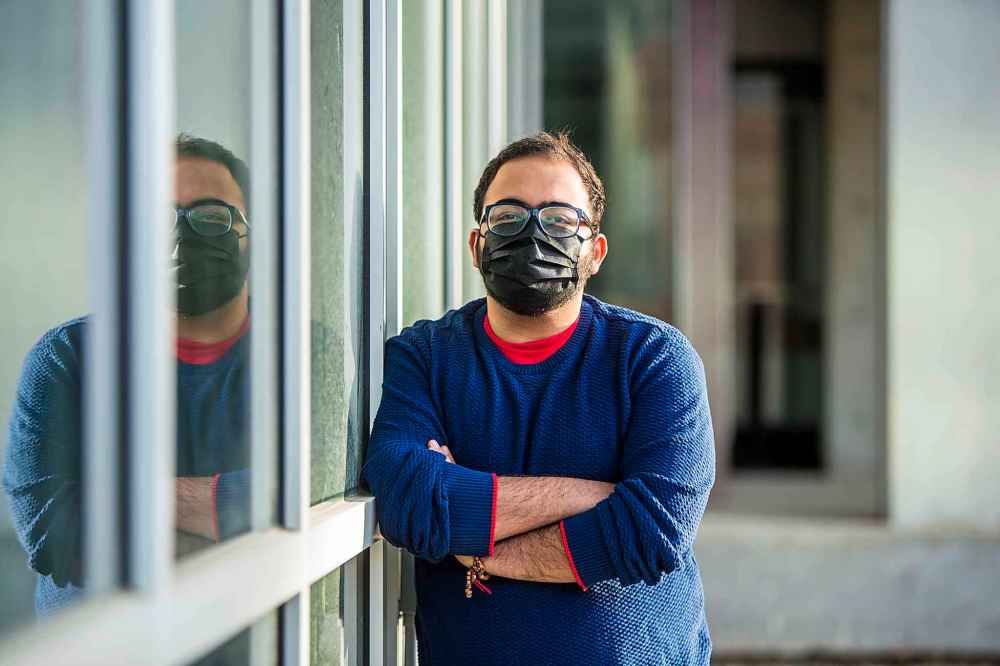
Moving in in September, he quickly met people from his floor and elsewhere: at a screening of Shrek, he met about a dozen people he still regularly talks with. But the semester can be divided into two segments: Before Shrek, and After Shrek.
After Shrek came code red. “Since then, it’s been a different story.”
Like Wiebe, Gillam, and Maillet-Goodfellow, Kapoor’s made his room into his own personal campus: he studies there, he eats there, he plays God of War on Playstation 4, he works remotely for a tech company. He has a lava lamp, and a cluttered floor befitting the university lifestyle.
He went to university in India, where he also lived in residence, but came to Winnipeg because he had family here and was looking for a change of pace and to expand his horizons and opportunities. At Bennett University in India, he was a part of the debate club, the marketing club and the literature club, often finishing class at 4 p.m., and rushing straight to a weekly meeting. This year, programs like pumpkin carving and bingo have been online, and many clubs he hoped to join are not active.
“This year is the exact opposite (of Bennett),” he says. “I’m never busy.”
“I don’t want to blame the campus or anyone involved in (residence life),” Kapoor says of this semester. “They’ve done a fantastic job given the situation. But campus is dead, for lack of a better way to put it.”
“I don’t want to blame the campus or anyone involved in (residence life). They’ve done a fantastic job given the situation. But campus is dead, for lack of a better way to put it.” – U of M student Nik Kapoor
He gets it. They all get it. These restrictions are in place for health and safety reasons, and with the hope that, at some point, their university experience will more closely align with the one they anticipated having.
“I’m more concerned with COVID than myself, and I hope things settle down,” he says. “If that happens, campus will settle down, and campus will go back to a new normal again.”
He also hopes he can go back to visit family safely before long. His mom and step-dad in Bangalore both tested positive for COVID in September. They’ve both since recovered, but Kapoor was hit hard by the news. He was too far away to help.
“I got the call, and I had to go for a walk,” he said. He’s cried on campus more than once, which he says isn’t too rare for an international student trying to adjust. Having to deal with such news, and mid-terms, is no easy feat.
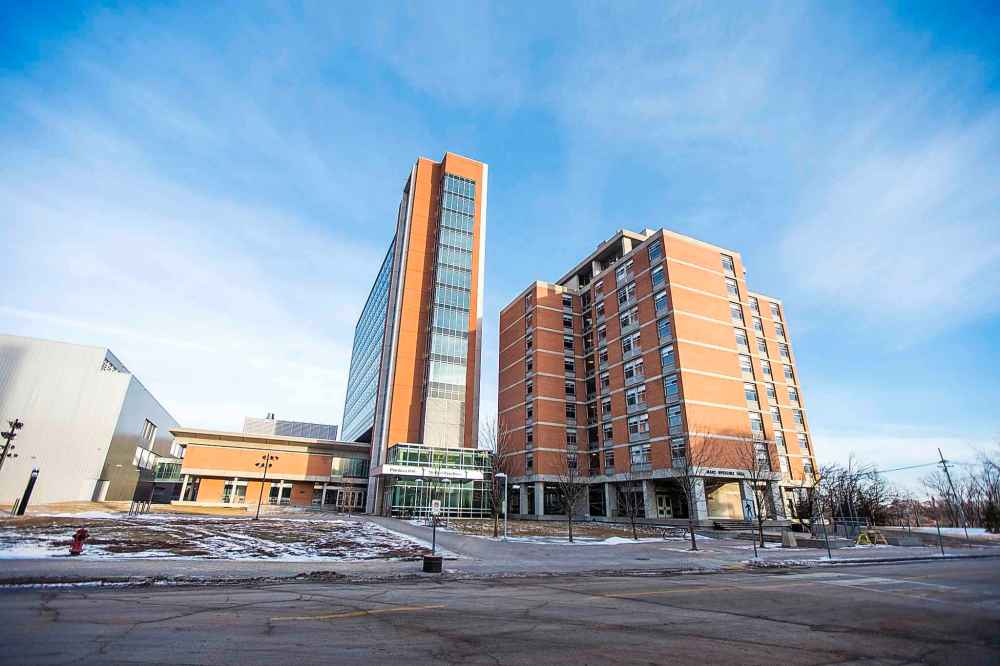
But Kapoor and other students in residence can see the light at the end of the semester’s tunnel: four months into a school year unlike any other, final exams are nearing. It’s hard to believe, but the fall semester is just about complete.
Kapoor says the semester hasn’t been a bust. Sure, it’s been difficult, at some points excruciating to deal with the monotony of his surroundings, which seemed to constrict more and more each week. But ultimately, he’s getting a university experience, even if it is different than he wished for.
Once vaccines are procured and distributed, and COVID cases in the province are under control, he hopes campus can get back to the one he grew to appreciate last year.
“Maybe then we can go back to dining together, or even having a movie night on campus,” he said.
Anything but Shrek, though. “I can tell you that none of us were watching.”
ben.waldman@freepress.mb.ca

Ben Waldman covers a little bit of everything for the Free Press.
Our newsroom depends on a growing audience of readers to power our journalism. If you are not a paid reader, please consider becoming a subscriber.
Our newsroom depends on its audience of readers to power our journalism. Thank you for your support.


